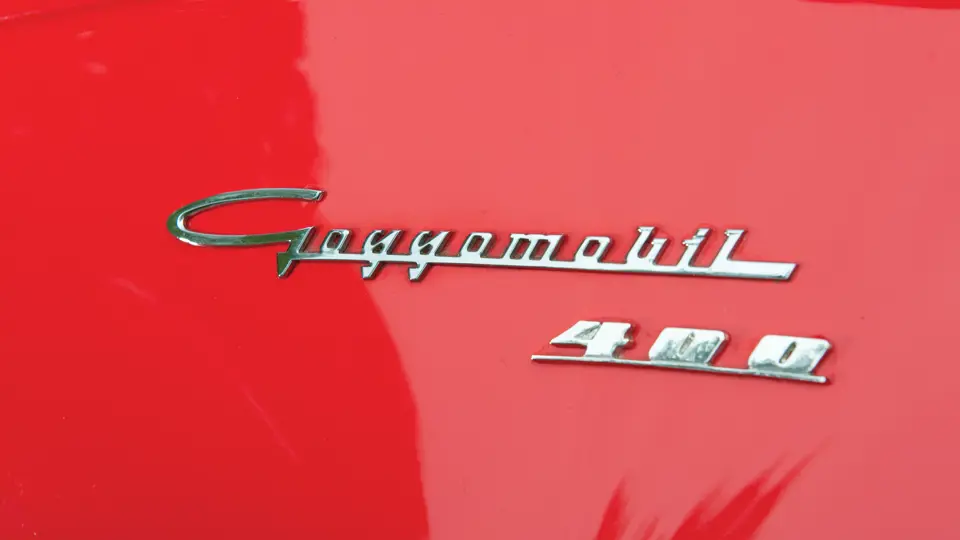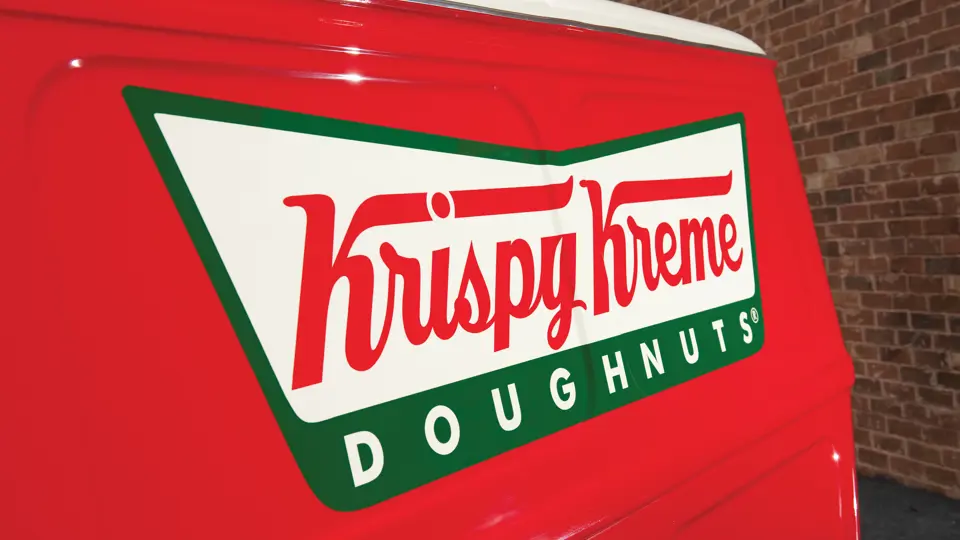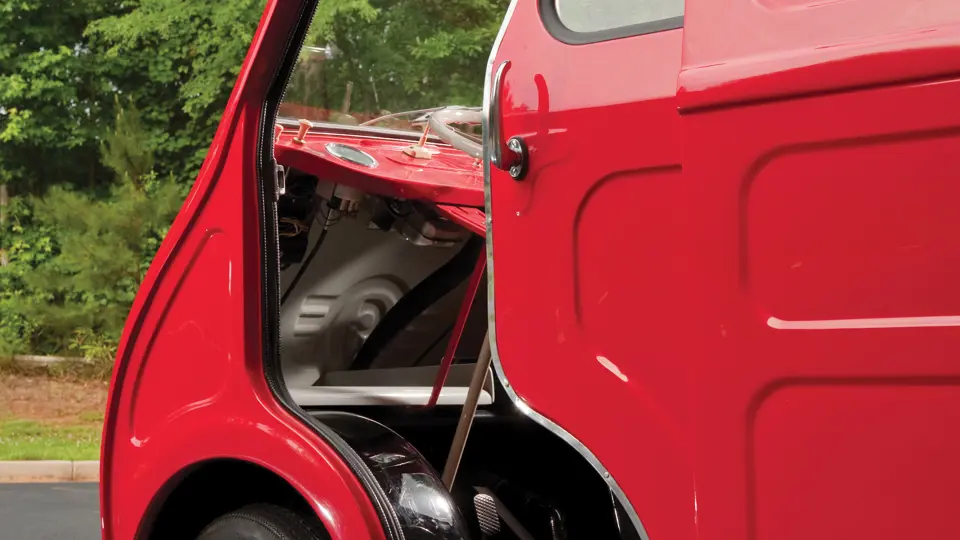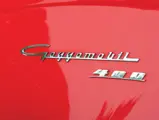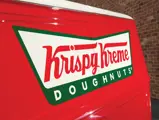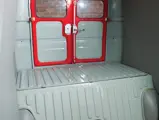Freshly restored and very rare; one of the most desirable microcars extant.
SPECIFICATIONS
Manufacturer: Hans Glas GmbH
Origin: Dingolfing, Germany
Production: 3,665
Motor: Glas vertical twin, 2-stroke
Displacement: 247 cc
Power: 14 hp
Length: 9 ft. 6.5 in.
Identification No. TBA
The Goggomobil was built by Hans Glas, GmbH, in Dingolfing, Germany. Originally a manufacturer of agricultural machinery, Glas began building the Goggo, a motor scooter, in 1951. From 1955, a small sedan called “Goggomobil” was offered, a four-passenger, two-door car with a 15 horsepower two-stroke 250-cubic centimeter engine in the rear. A coupe model with a more streamlined roof line was also available. Suspension was independent all around, with coil springs and swing axles. Almost 220,000 sedans and more than 66,000 coupes were built through 1969.
Deutsche Bundespost, the German post office, had been using three-wheel Tempo delivery vans. When the Tempo went out of production, a new vehicle was required. Glas then adapted the basic Goggomobil to meet the postal specifications, and the Kleintransporter (little van) was created. A larger, 398-cubic centimeter engine became available, and it was used to good effect in later models of the van, which also had lower gear ratios. Of 3,665 Kleintransporters built between 1957 and 1965, 2,000 were taken by Deutsche Bundespost.
Outfitted in the livery of Krispy Kreme, the popular American doughnuts, this Goggomobil Transporter has been completely restored.
Now an international chain, Krispy Kreme was founded by Paul and Vernon Rudolph in Nashville, Tennessee in 1936. Their signature product was a glazed doughnut that was served warm. The Rudolphs, uncle and nephew, had purchased a shop in Paducah, Kentucky, along with a secret recipe for yeast-raised doughnuts. Vernon began selling the wares in Paducah on his bicycle. In 1937, they moved the shop to Nashville but stayed on the move, opening a North Carolina shop and selling to grocery stores. The distinctive Krispy Kreme logo was designed by a local architect, Benny Dinkins.
The vast expansion of Krispy Kreme began in the 1950s, during which the brand became renowned throughout the southeast United States. Expansion continued in other regions during the 1960s and ’70s; the 1990s were characterized by growth into Canada, the first such store opening in Mississauga, Ontario. The first store outside North America was in Sydney, Australia. Currently, in addition to the U.S. and Canada, Krispy Kreme shops are located in the United Kingdom, Australia, Lebanon, Turkey, the Dominican Republic, Kuwait, Mexico, Puerto Rico, South Korea, Malaysia, Thailand, Indonesia, the Philippines, Japan, China, the United Arab Emirates, Qatar, Saudi Arabia, Bahrain, and Ethiopia. Advertising, which had previously been principally word-of-mouth, went media-wide in 2006, with television and radio commercials featuring heart-shaped doughnuts in a “Share the Love” campaign.
Any product with a long history, a broad reach, and an iconic logo breeds a strong collectibles market, and Krispy Kreme is no exception. In addition to the usual coffee mugs, ash trays, and even boxer shorts, there are miniature trucks with the Krispy Kreme logo, including 1930s Chevrolets and ’50s Step-Vans. What could be more collectible than a Krispy Kreme Goggomobil—in full size?
A fresh restoration from the Bruce Weiner facility, this Goggomobil van is painted red with a white top. With grey seating and interior panels, it is immaculate and nicely set off with 10-inch whitewall tires. This Krispy Kreme Goggomobil represents a chance to acquire the ultimate Krispy Kreme collectible.

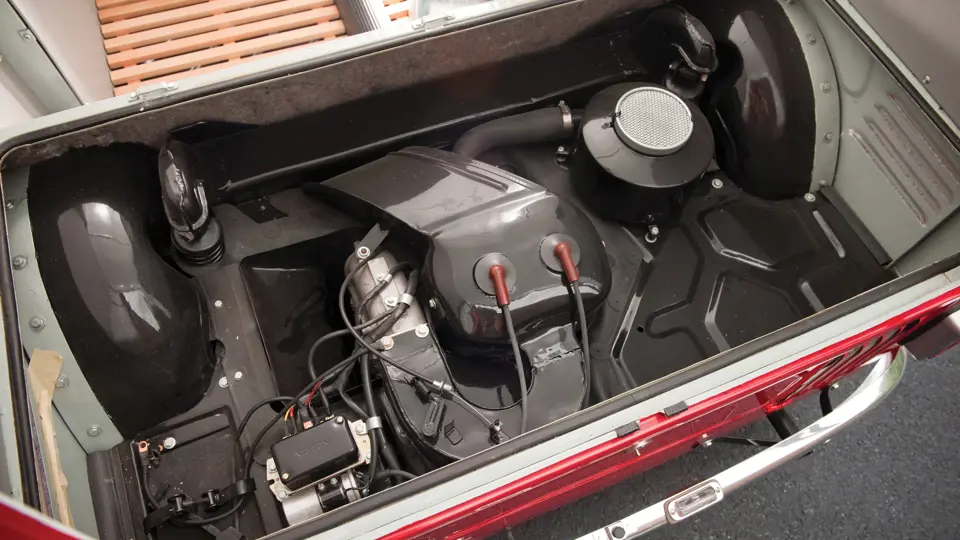


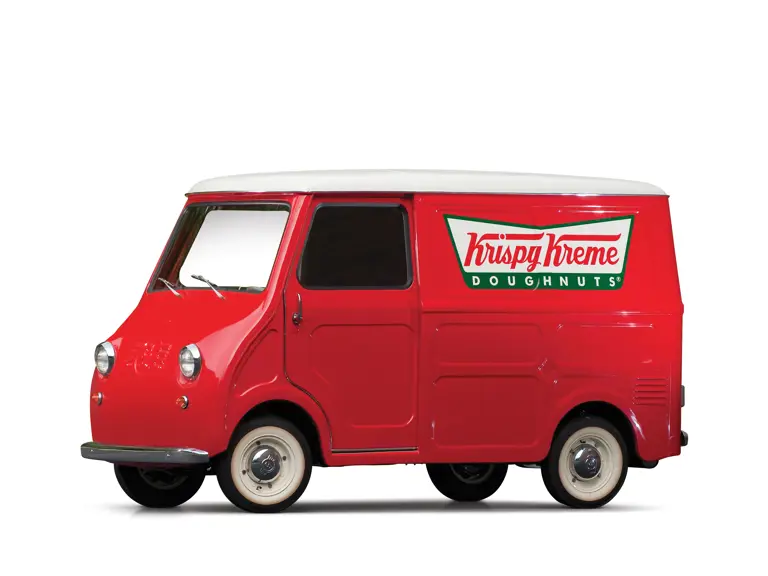
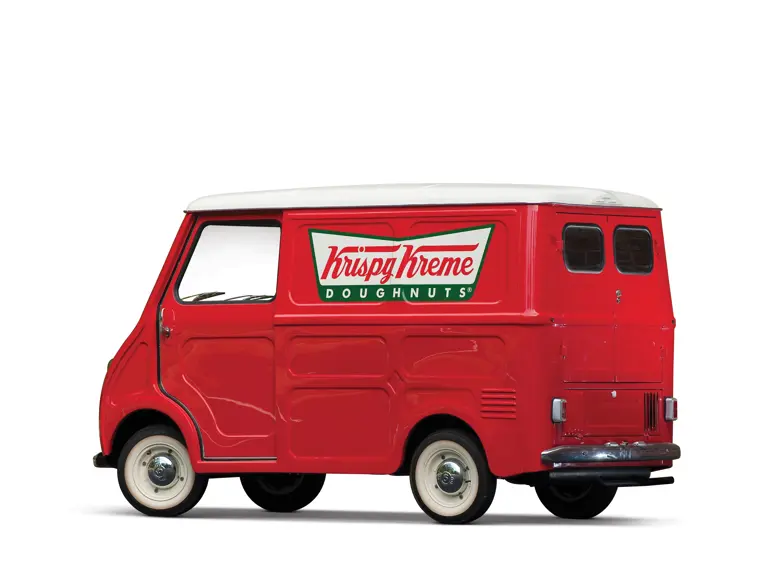
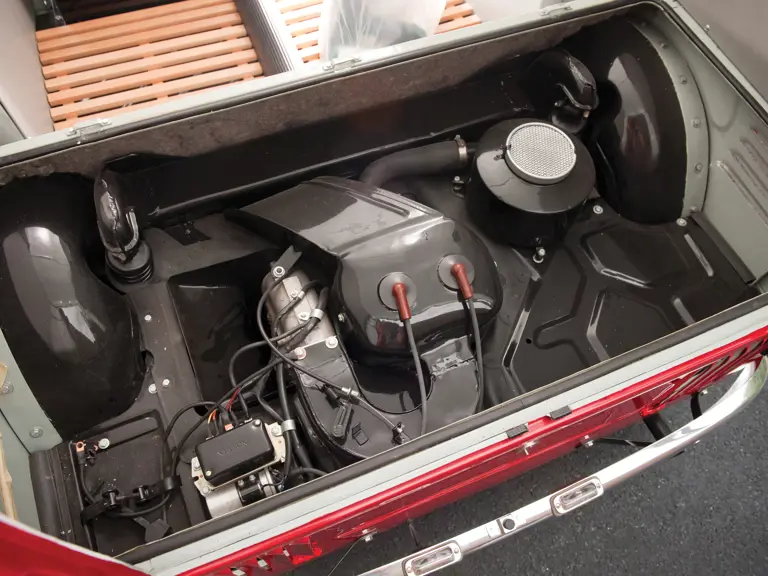
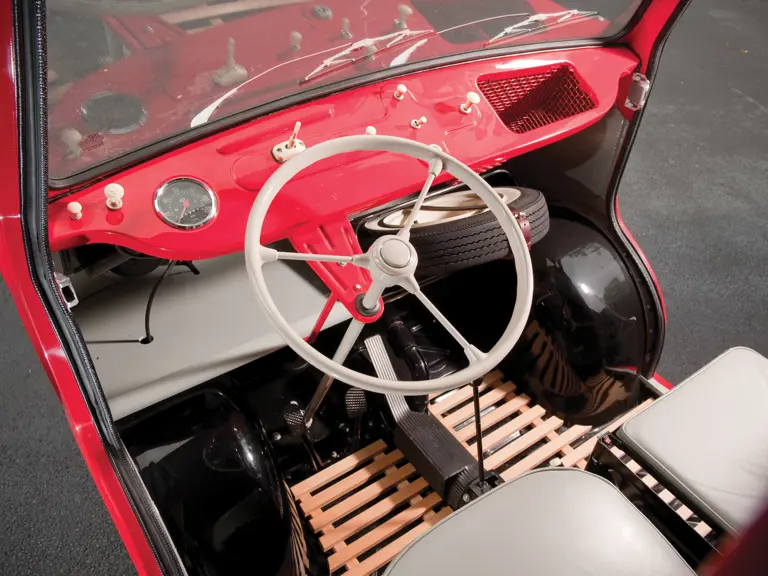
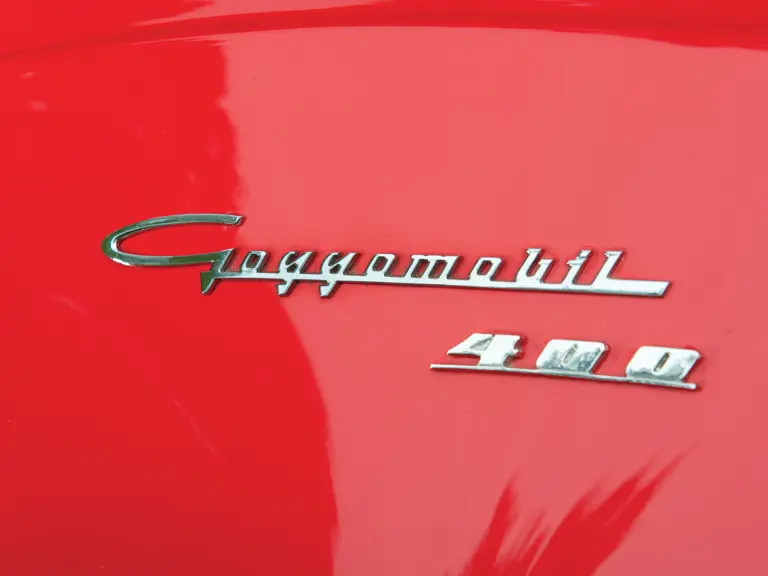
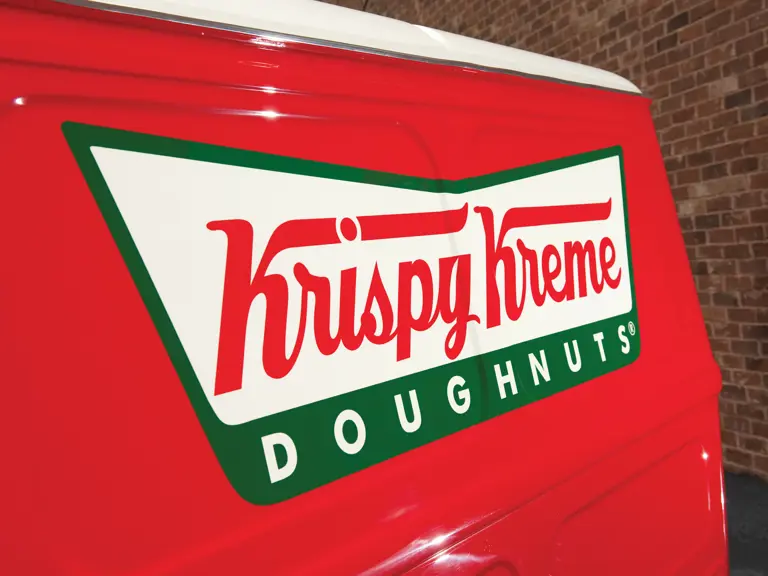
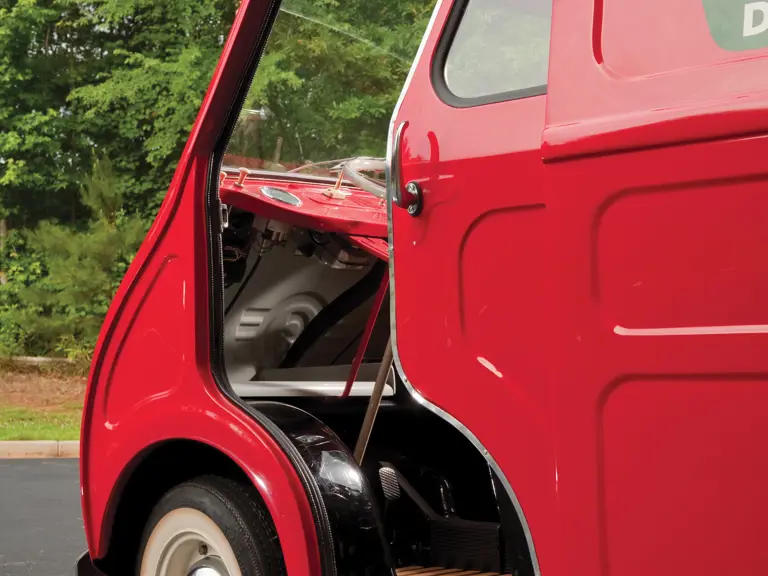
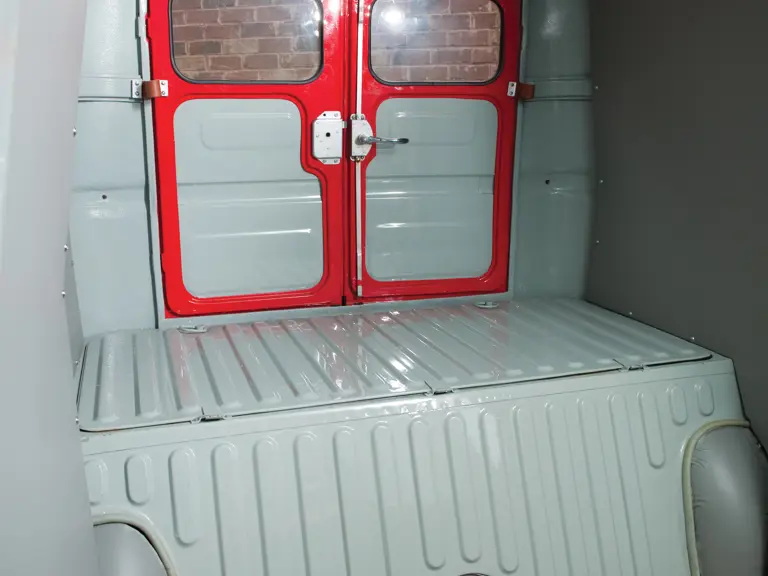
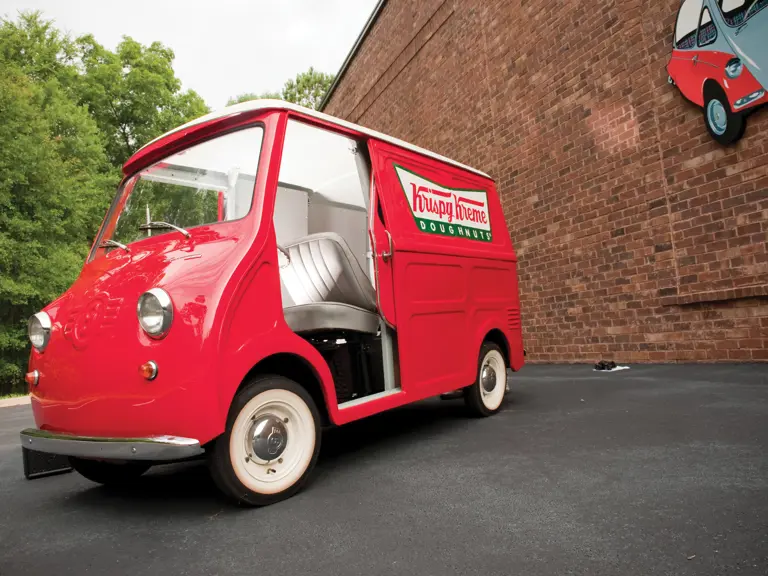
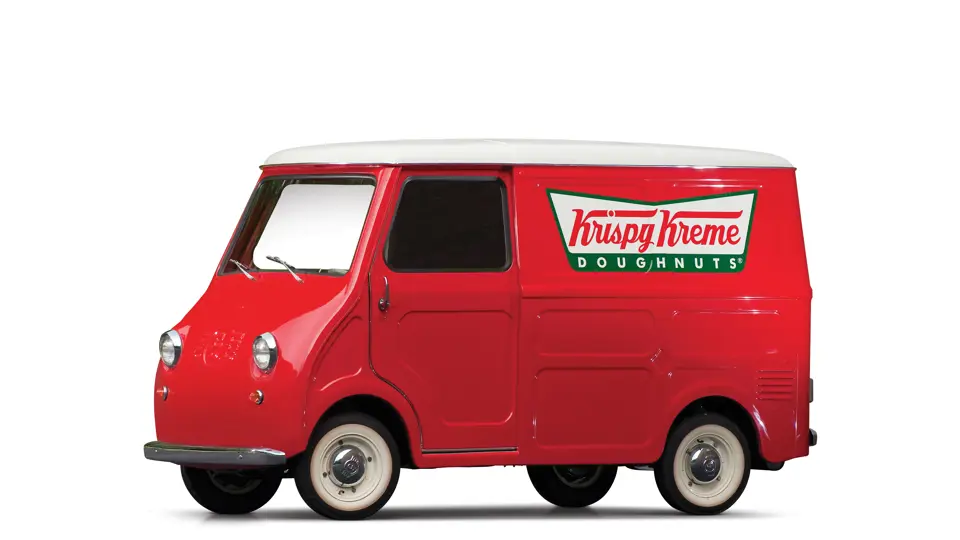
 | Madison, Georgia
| Madison, Georgia
